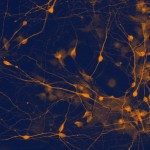Link to Pubmed [PMID] – 23960212
Cereb. Cortex 2015 Jan;25(1):35-45
Traumatic brain injury (TBI) and its consequences represent one of the leading causes of death in young adults. This lesion mediates glial activation and the release of harmful molecules and causes brain edema, axonal injury, and functional impairment. Since glial activation plays a key role in the development of this damage, it seems that controlling it could be beneficial and could lead to neuroprotective effects. Recent studies show that minocycline suppresses microglial activation, reduces the lesion volume, and decreases TBI-induced locomotor hyperactivity up to 3 months. The endocannabinoid system (ECS) plays an important role in reparative mechanisms and inflammation under pathological situations by controlling some mechanisms that are shared with minocycline pathways. We hypothesized that the ECS could be involved in the neuroprotective effects of minocycline. To address this hypothesis, we used a murine TBI model in combination with selective CB1 and CB2 receptor antagonists (AM251 and AM630, respectively). The results provided the first evidence for the involvement of ECS in the neuroprotective action of minocycline on brain edema, neurological impairment, diffuse axonal injury, and microglial activation, since all these effects were prevented by the CB1 and CB2 receptor antagonists.
